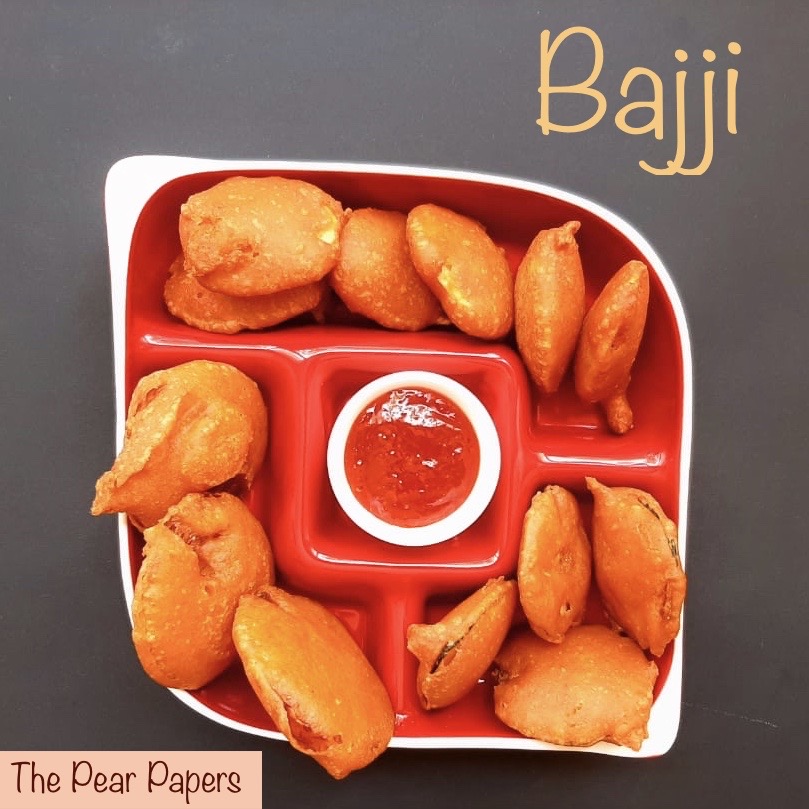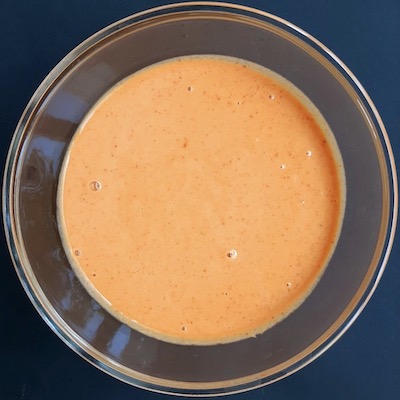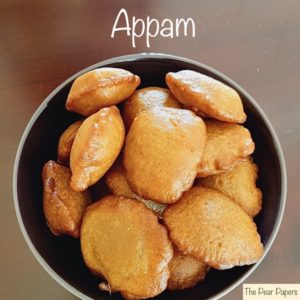
Crispy Bajji
Bajji is a savory snack made by dipping thin slices of vegetables in a spicy batter and deep frying them in oil until golden and crispy. Typically, in South India, when two families meet for the first time to propose a wedding alliance, bajji and rava kesari (a sweet dish made with semolina) are served. These bajjis are an integral part of many arranged South Indian match making processes 🙂
Requiring only a few ingredients to make, bajji is an all time favorite in almost all South Indian families. Primarily bajjis are made with potato, raw banana, brinjal, onion and long green chilly. However, there is no limitation on what can be used to make bajji. You can make it with almost any vegetable like carrot, cauliflower, zucchini, chayote, bitter gourd, ridge gourd, etc. Even paneer cubes, leftover bread, fruits like semi ripe banana, apple, pineapple can be used to make bajji. The taste of bajji lies in the batter used to coat the vegetables. You can mix all the dry ingredients and keep it in a sealed container in your freezer. Whenever you are craving for some tasty bajji, this dry mixture will come in handy. On a winter evening some crispy bajji paired with South Indian filter coffee is the best you can ask for.
Ingredients
Chickpea flour (Besan) – 1 cup
Rice flour – 1 cup
Salt – 1 tsp (or to taste)
Red chilly powder – 2 tsp (or to taste)
Asafoetida (hing) – 1/2 tsp
Potato (washed and sliced) – 10 slices
Zucchini (washed and sliced) – 10 slices
Onion (peeled and sliced) – 10 slices
Bicarbonate of soda (cooking soda) – 1 pinch (optional)
Oil for deep frying
Water – 1 1/2 cups
Yield
30 pieces
Prep time
15 mins to slice the vegetables
10 mins to prepare batter
Cook time
35 to 40 mins
Method
1) Chop all the vegetables into thin slices. Wash the potato slices twice, drain and pat dry. Set aside. Keep the sliced vegetables spread out on a tray so they don’t stick together.
2) In a large mixing bowl, take all the dry ingredients. Mix thoroughly. Add water and mix thoroughly. Keep mixing this for atleast 5 to 7 minutes. This step is very important to make your bajjis airy, fluffy and light. Use a hand blender or a whisk to mix the batter until atleast a few small bubbles form on the surface of the batter. This will improve the texture of your bajji nicely.

3) In a heavy bottomed pan/kadai heat the oil for deep frying. Test if the oil is hot enough to start frying. (Note 1)
4) Once the oil is hot enough, take the vegetable slices one by one, dip it in the batter, make sure the vegetable is completely coated with the batter and gently drop it in the oil. (Dip the slices as required for frying. If you let extra slices of vegetables sit in the batter, your batter will become thinner and watery because the veggies will release water).
5) Gently turn over the bajjis and fry them until golden and crisp on both sides. Remove from oil, drain on kitchen paper towels to absorb excess oil.
6) Serve hot with coconut chutney, tomato ketchup or any yoghurt based dip. It tastes great even without any accompaniment.
Notes
- To test if the oil is hot enough, gently drop 1/4 tsp of the prepared batter into the oil. If it rises from the bottom of the pan to the surface in just about 4 to 5 seconds, then it means the oil is ready to fry the bajjis.
- Always make apple and onion bajjis immediately after slicing to avoid oxidation. Also the rings of the onions start separating while you try to dip it in the batter if kept for long.
- Keep the oil in medium heat constantly. If oil is too hot then the bajjis quickly turn dark without the vegetable slices getting cooked properly. If the oil is not hot enough then the bajjis absorb a lot of oil and become soggy.
- Adding bicarbonate of soda is completely optional. If you add just a pinch, the bajjis stay crisp and crunchy for longer time.
- Fry the bajjis immediately after preparing the batter. If you are preparing a bigger batch, then mix all the dry ingredients first, take smaller portions from this and mix proportionate amount of water to make bajjis in batches. This way the batter stays fresh until the last batch. If you don’t use up all the dry ingredients mixture, then you can store it in the freezer and use it later to make Pakodas or Pakoda Curry.
- You can add ajwain (carom seeds) to the batter as a digestive and taste enhancer.
Beginners’ tips
- Always keep a bottle of water in the fridge when you decide to do deep frying. In case of accidental splashing of hot oil or any kind of burn injury, immediately wash the affected part with cold water as a first aid measure. See our KuNukku recipe for more tips on deep frying.





4 Comments
MotherOfNOMS
Oh wow!! Nice to know that you like Indian cuisine 🙂
I’ve actually never seen Bajji in restaurant menus abroad! Only in India.
It’s super easy to make at home though. Let me know how you like it!
Sandra Ans
I have never heard about this snack, but it sounds very tasty. As I like Indian cusine (at least what I have ate in Indian resturants in Germany), I would like to try also Bajji.
Next time, when I will visit the restaurant, I will take a look at the menu, maybe I will have a luck and chance to try it!
MotherOfNOMS
Hi Demi, hope you enjoy making this! Please do share your feedback. Happy cooking 🙂
Demi
Sometimes I missed the Indian Food. After living In Europe for a few years now at times I crave for it. Thanks for sharing this recipe.